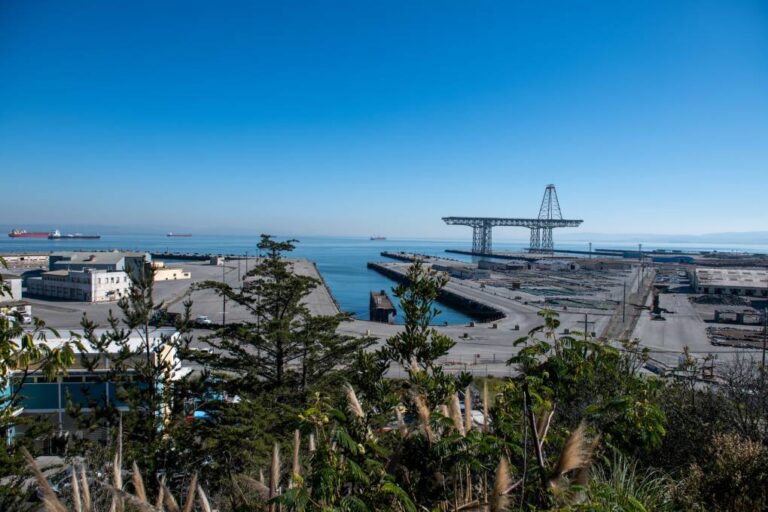Photo: A view of the former Hunters Point Naval Shipyard from the Lennar at the Shipyard housing development on Feb. 25, 2022. (Beth LaBerge/KQED)
The U.S. Navy, for the first time, has acknowledged what Bay Area climate scientists and residents have asked the agency to look into for years: that in just over a decade, potentially toxic groundwater could surface at a San Francisco Superfund site partly because of human-caused climate change.
…heavy metals in permanent groundwater could surface in five other places
—U.S.Navy
Every five years, the agency reviews the cleanup of the Hunters Point Naval Shipyard next to the Bayview-Hunters Point neighborhood. The agency studied how climate effects — sea-level rise, groundwater rise and storm surge — could impact the cleanup of one of the nation’s largest and most complicated Superfund sites. The Navy finished the review in November and released it to the public in late January. The details of the climate review were buried deep in a 566-page document, and KQED is reporting on them for the first time.‘The five-year review based on sea-level rise confirms some of our collective concerns in Bayview-Hunters Point.’Arieann Harrison, founder and CEO, Marie Harrison Community Foundation
The Navy found that in 2035, contaminated groundwater from heavy metals and “low-level radiological objects” — steeping in the water like a tea bag — could surface in an area of the site called “Parcel D-1,” which the Navy used for ship repair, maintenance and radiological research. The Navy capped this area with asphalt to keep any remaining pollution underground.
The Navy’s assessment said heavy metals in permanent groundwater could surface in five other places by 2065.
“The five-year review based on sea-level rise confirms some of our collective concerns in Bayview-Hunters Point,” said Arieann Harrison, founder and CEO of the Marie Harrison Community Foundation, an environmental justice group serving the Bayview community.
“It’s going to take more work to reach the goal of creating a safe environment for us all,” she added in an email.
The Navy also found that a 100-year storm surge in 2035 could cause flooding in some areas. By 2065, “a 100-year storm surge would impact portions of all parcels.”
The report raises fresh questions about the city’s plans to build thousands of homes on what is an exceedingly complex and ongoing cleanup effort. When finished, the 693-acre Candlestick Point-Hunters Point Shipyard project — which the Superfund site is part of — could have more than 10,000 housing units. The development would include two new waterfront neighborhoods with […]
Full article: www.kqed.org

